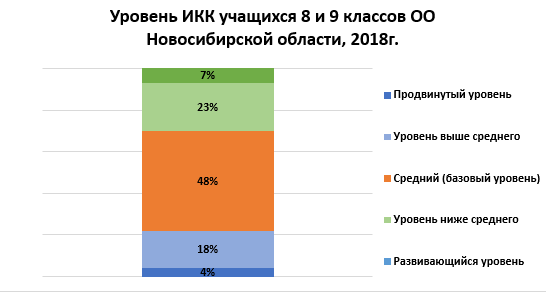The results of monitoring of information and communication literacy assessment at students of the Novosibirsk region, stage 2
.jpg)
Following the 2nd stage of monitoring (4127 students took part in this study) we presented: the results of ICL assessment of students in 8th and 9th grades of the Novosibirsk Region; factors influencing the formation of ICL; the role of school in building ICL; ways of using test results; and also the examples of types and forms of educational activity and pedagogic practice which influence on formation of ICL.
The general level of ICL of students tested in 2018 in the 8th and 9th grades of Novosibirsk is about average. 4% of tested students have the highest level of ICL, 48% of students have an average level of ICL, and 7% have the lowest, "developing" level. Another 18% and 23% fall into the intermediate categories “above average” and “below average”.
Discussed topics:
- Who are the main users of ICL assessment results and what are their results результатов тестирования по оценке ИК-компетентности и их information requirements?
- How to use ICL assessment results?
- How to change students content of the activities, forms and methods of education process with the switching of children's activities from strictly academic to practical and independent education?
- What is the connection between the ICL assessment results and meta-subject result requirements? Compliance of the tool with the standards of federal state educational standart of basic general education.
- What pedagogical practices in curricular, extracurricular and leisure activities influence on formation of ICL components?
- How can a school environment rich with information and communication technologies combined with modern educational technologies and pedagogical practices affect a significant increase in the level of ICL?

